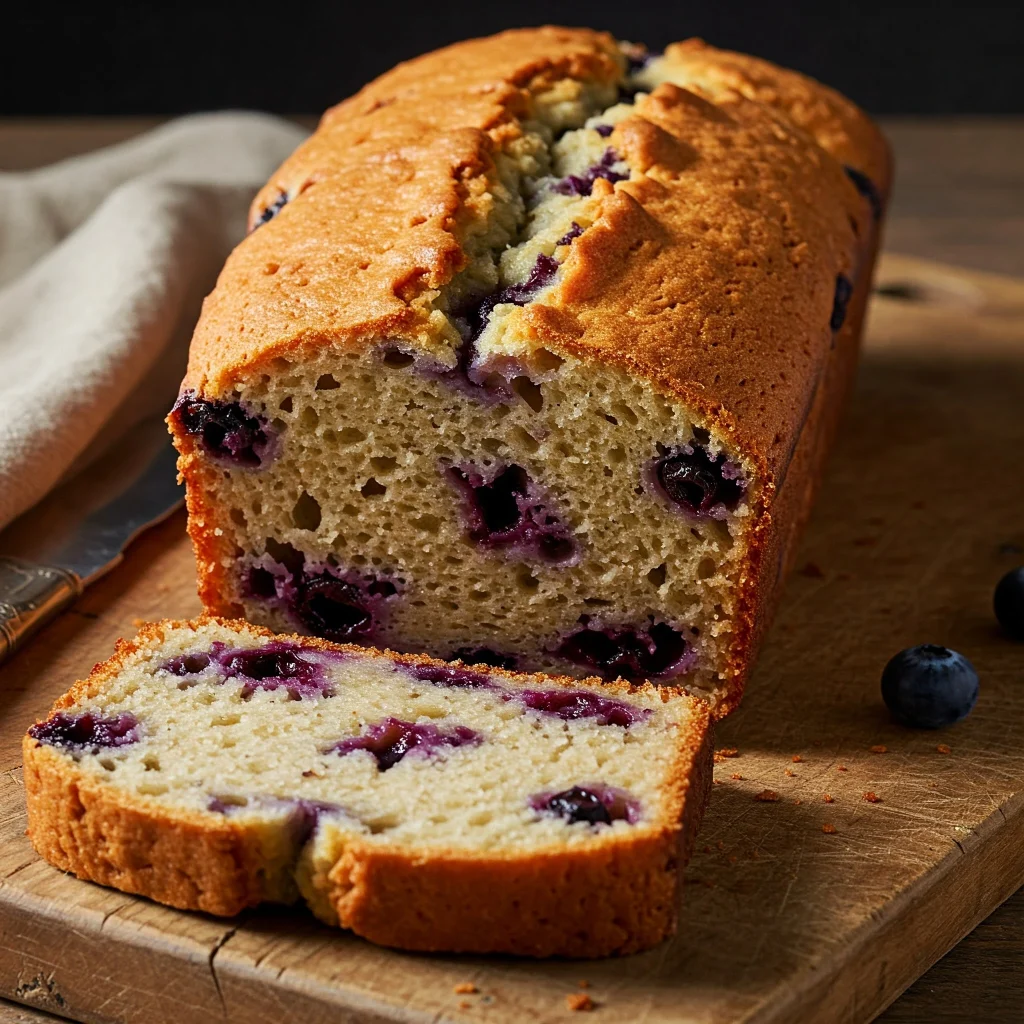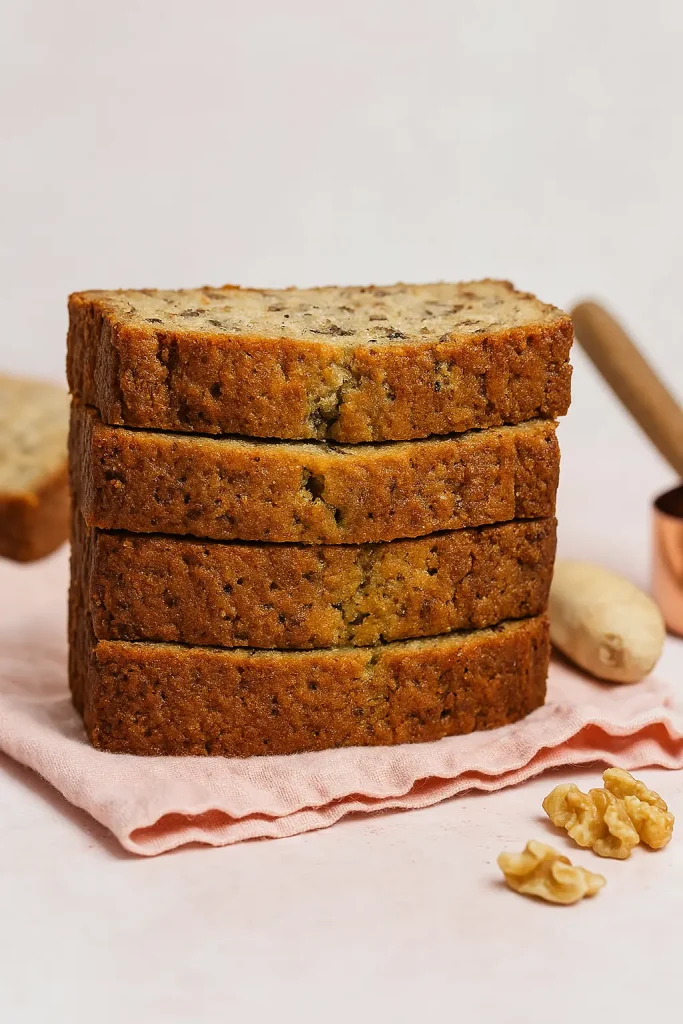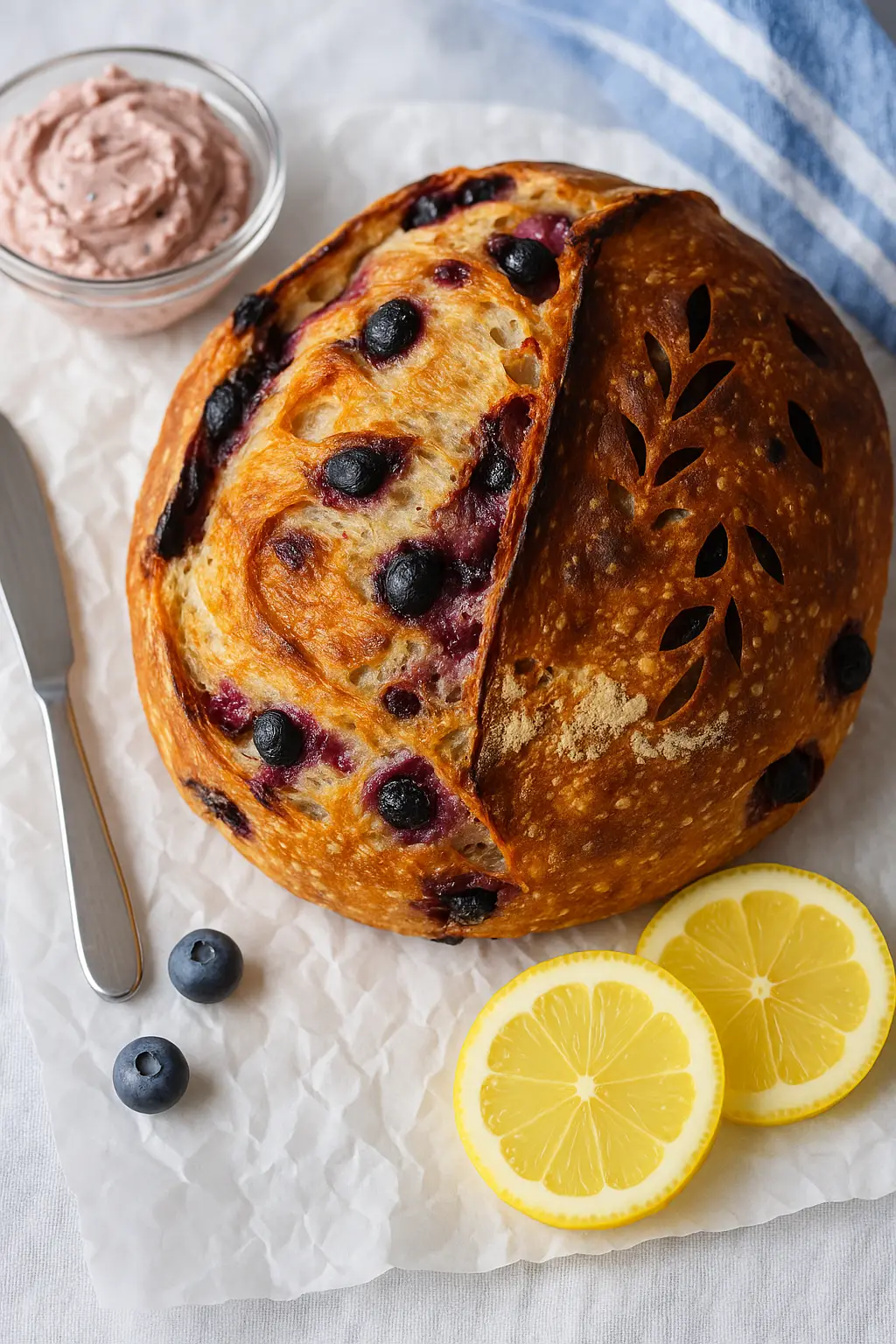Cottage Cheese Bread Recipe
When you hear “cottage cheese bread,” your first reaction might be skepticism. Cottage cheese? In bread? But this unexpected ingredient creates one of the most delightful homemade loaves you’ll ever taste. The magic of cottage cheese in bread dough results in a tender, moist interior with a subtle tangy flavor that elevates this bread beyond the ordinary.
Why Cottage Cheese Bread Is a Game-Changer
This no-knead cottage cheese bread is revolutionizing my baking routine, and here’s why it might change yours too:
- High protein content: With cottage cheese as a star ingredient, this bread packs significantly more protein than traditional recipes
- Lower carbohydrates: Uses less flour than conventional bread recipes, making it a smarter choice for those monitoring carb intake
- Super moist: The cottage cheese creates an incredibly tender crumb that stays fresh longer
- No kneading required: Simply mix, pour, and bake!
- Versatile: Perfect for everything from avocado toast to sandwich bread to dinner accompaniment
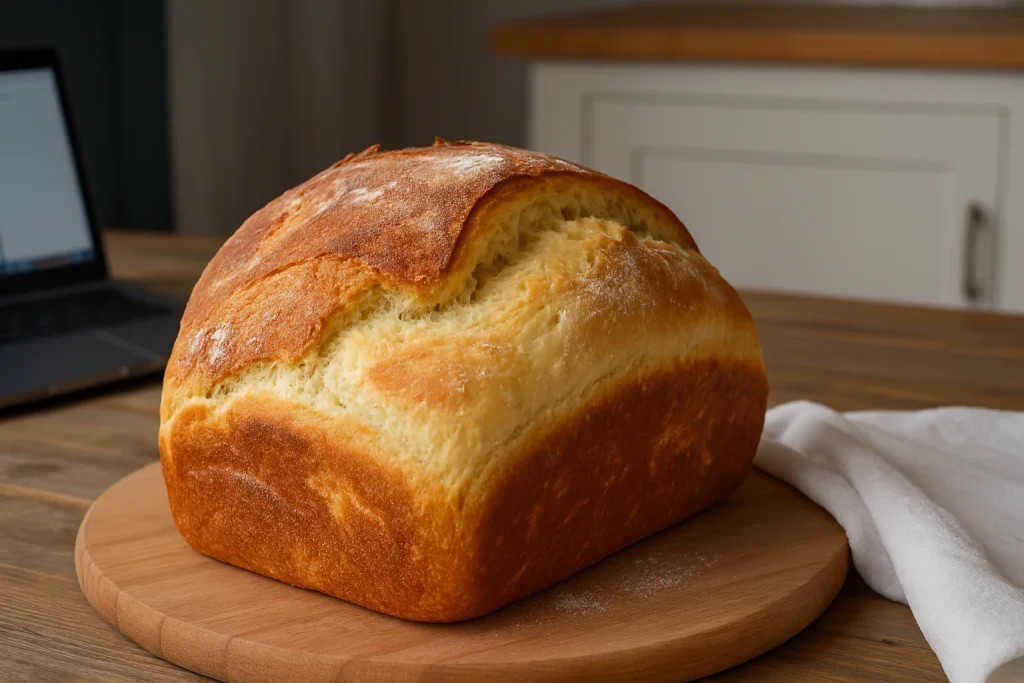
Cottage Cheese Bread Recipe Overview
Baking Time and Nutrition Facts
12 Slices
10 Minutes
45 Minutes
165 Kcal
6g
9g
18g
80 Minutes
30 Minutes
Equipment Needed
- Loaf pan
- Parchment paper
- Electric mixer
- Mixing bowl
- Rubber spatula
- Measuring cups
- Wire cooling rack
- Bread knife for slicing
Cottage Cheese Bread Ingredients
Key Ingredients
1½ cups (340g) cottage cheese (2% or 4% fat)
3 large eggs
¼ cup (60ml) milk (any type works)
2 tablespoons olive oil or melted butter
1½ cups (180g) all-purpose flour
½ cup (60g) whole wheat flour (or more all-purpose flour)
2 tablespoons ground flaxseed (optional, for added nutrition)
2 teaspoons baking powder
½ teaspoon baking soda
1 teaspoon salt
2 tablespoons honey or maple syrup (optional)
How To Make Cottage Cheese Bread
Instructions
- Prepare Your Workspace
Preheat your oven to 350°F (175°C). Line a 9×5-inch loaf pan with parchment paper, leaving some overhang on the sides for easy removal. Lightly spray or oil the parchment paper. - Mix the Wet Ingredients
In a large mixing bowl, combine the cottage cheese, eggs, milk, and olive oil. Whisk until well combined. Don’t worry if the mixture isn’t perfectly smooth—those small cottage cheese curds will melt into the bread and create wonderful texture. - Add the Dry Ingredients
Add both flours, ground flaxseed (if using), baking powder, baking soda, salt, and sweetener (if using) to the wet ingredients. Stir with a rubber spatula just until combined. Be careful not to overmix—it’s okay if the batter has a few lumps. - Transfer to Pan
Pour the batter into your prepared loaf pan. Use your spatula to smooth the top. At this point, you can sprinkle optional toppings like sunflower seeds, sesame seeds, or oats on top for extra texture and nutrition. - Bake to Golden Perfection
Bake in the preheated oven for 40-45 minutes, or until the top is golden brown and a toothpick inserted into the center comes out clean. If the top is browning too quickly, loosely cover with aluminum foil for the last 10-15 minutes of baking. - Cool and Enjoy
Allow the bread to cool in the pan for 10 minutes, then use the parchment paper overhang to lift it out and transfer to a wire rack. Let it cool for at least 20 more minutes before slicing (though I know it’s tempting to cut in right away!).
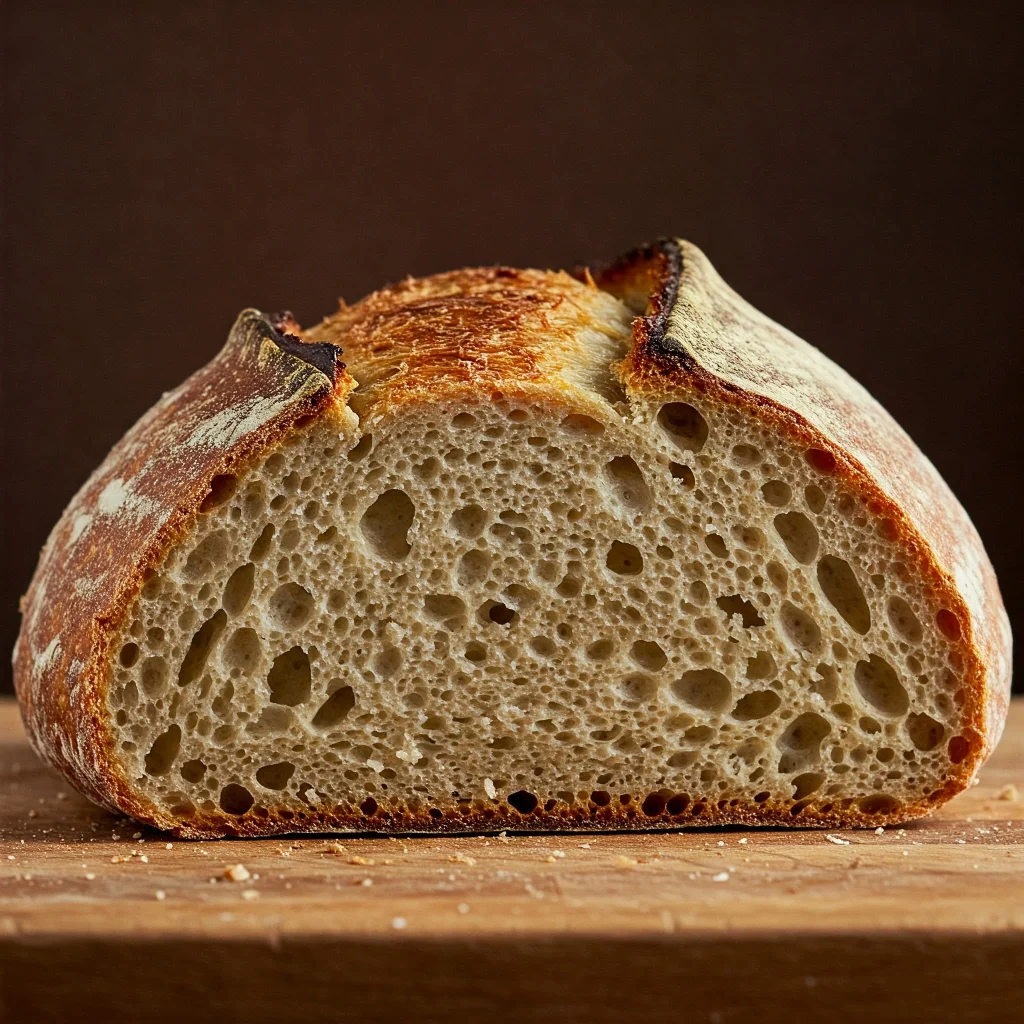
More Quick and Easy Bread Recipes
- Keto Cream Cheese Almond Flour Bread
- Moist Banana Nut Bread Recipe With Oil
- Keto Blueberry Lemon Bread Recipe
Cottage Cheese Bread Recipe Problems & Solutions
Problem #1: Dense, Heavy Loaf
Potential Causes:
- Insufficient rise time
- Overworking the dough
- Too much cottage cheese
- Incorrect flour-to-liquid ratio
Expert Solutions:
- Allow Proper Rise Time: Cottage cheese dough often requires 20-30% more rise time than traditional bread due to its higher fat content. For the first rise, give it at least 90 minutes in a warm environment (75-80°F).
- Handle With Care: Mix until just combined, then knead gently. Cottage cheese bread benefits from a lighter touch—aim for 5-7 minutes of kneading rather than 10-12 for regular bread.
- Balance Your Ingredients: For a 1-pound loaf, limit cottage cheese to 3/4 cup per 3 cups of flour. Drain excess moisture if using wetter cottage cheese varieties.
- Adjust Your Recipe: If your dough feels heavy, gradually add 1 tablespoon of flour at a time until you reach a tacky but not sticky consistency.
Problem #2: Soggy or Gummy Interior
Potential Causes:
- Underbaking
- Too much moisture in the cottage cheese
- Cutting into the bread while too hot
- Improper cooling environment
Expert Solutions:
- Extend Baking Time: Cottage cheese bread often requires 5-10 minutes longer than standard bread recipes suggest. Look for an internal temperature of 205-210°F rather than the standard 190°F.
- Drain Your Cottage Cheese: Place cottage cheese in a fine-mesh strainer for 20-30 minutes before incorporating it into your dough.
- Practice Patience: Allow the bread to cool completely on a wire rack for at least 2 hours before slicing. This allows the interior structure to set properly.
- Create Proper Air Circulation: Cool bread in a draft-free area with good air circulation—avoid covering the bread while warm as trapped steam will create sogginess.
Problem #3: Overly Hard or Cracked Crust
Potential Causes:
- Too hot an oven
- Insufficient steam during baking
- Overproofing
- Inadequate surface preparation
Expert Solutions:
- Adjust Oven Temperature: Reduce your oven temperature by 25°F from your standard bread recipe and extend baking time slightly.
- Create Steam: Place a shallow pan of water on the bottom rack during preheating and the first 10 minutes of baking to create steam, which helps develop a perfect crust.
- Monitor Proofing Carefully: Perform the “finger dent test”—a gentle poke should leave an indentation that slowly springs back partially but not completely.
- Brush With Fat: Before baking, lightly brush the surface with melted butter or olive oil to promote a softer, more pliable crust.
Expert Ingredient Selection
Cottage Cheese Selection
- Fat Percentage: Full-fat (4%) cottage cheese creates the richest texture, but 2% works well for a lighter loaf
- Curd Size: Small-curd varieties distribute more evenly throughout the dough
- Organic Options: Often contain fewer additives that might affect dough behavior
- Draining Method: Line a strainer with cheesecloth for the most effective moisture removal
Flour Options & Effects
- Bread Flour (12-14% protein): Creates a chewy, well-structured loaf with excellent rise
- All-Purpose Flour (10-12% protein): Produces a balanced, versatile cottage cheese bread
- White Whole Wheat Flour: Adds nutrition while maintaining a lighter texture than traditional whole wheat
- 50/50 Blend: Equal parts bread flour and whole wheat flour create an ideal balance of texture and nutrition
Professional Mixing Techniques
Hand Mixing Method (Preferred)
- Whisk dry ingredients separately to ensure even distribution of leavening agents
- Blend wet ingredients (including cottage cheese) thoroughly in a separate bowl
- Create a well in dry ingredients and add wet ingredients gradually
- Mix with a wooden spoon until shaggy, then finish combining by hand
- Knead on a lightly floured surface using the heel of your hand with a push-fold-turn motion
- Stop when the dough feels smooth and springs back when lightly pressed (5-7 minutes)
Stand Mixer Approach (Convenience Option)
- Use the paddle attachment for initial mixing of wet and dry ingredients (1-2 minutes on low)
- Switch to the dough hook for kneading
- Mix on medium-low (speed 2) for only 3-4 minutes
- Finish with 1 minute of hand kneading to assess proper development
- Important: Be especially careful not to overmix with a stand mixer
Tips for the Perfect Loaf
- For a softer crust: Brush the top with melted butter immediately after baking
- For a moister interior: Use full-fat cottage cheese rather than low-fat
- For a better rise: Make sure your baking powder and baking soda are fresh
- For cleaner slices: Use a serrated knife and allow the bread to cool completely
Cottage Cheese Bread Recipe Variations
Herb & Garlic
Add 2 tablespoons of fresh chopped herbs (rosemary, thyme, chives) and 2 minced garlic cloves to the batter for a savory twist that pairs beautifully with dinner.
Mediterranean
Fold in ½ cup of chopped sun-dried tomatoes, ¼ cup of olives, and 1 tablespoon of dried oregano for a Mediterranean-inspired loaf.
Cinnamon Raisin
Add 1 tablespoon of cinnamon and ½ cup of raisins to the batter, plus an extra tablespoon of sweetener, for a breakfast-friendly version.
Seedy Boost
Mix in ¼ cup of mixed seeds (pumpkin, sunflower, sesame, chia) for added crunch, texture, and nutrition.
Storage Tips
- Room temperature: Store in an airtight container for up to 3 days
- Refrigerator: Keeps for up to 1 week
- Freezer: Slice before freezing for up to 3 months. Thaw slices as needed!
Serving Suggestions
This protein-rich bread is incredibly versatile:
- Toast and top with avocado and a poached egg for a protein-packed breakfast
- Use as sandwich bread for your lunch meal prep
- Serve alongside soup or salad for dinner
- Cut into cubes, toast, and make homemade croutons
- French toast, anyone? The higher protein content makes this bread perfect for it!
FAQs About Cottage Cheese Bread
What is cottage cheese bread?
- Cottage cheese bread is a soft, moist, and savory bread made with cottage cheese, which helps add moisture and a slight tangy flavor to the bread. It’s a great alternative to traditional bread recipes.
Can I use low-fat cottage cheese for this recipe?
- Yes, you can use low-fat cottage cheese. However, the bread may not be as rich and moist as when using full-fat cottage cheese.
Can I substitute cottage cheese with another cheese?
- While cottage cheese adds moisture, you can substitute it with ricotta cheese for a similar texture and flavor. However, other cheeses like cheddar or mozzarella may alter the taste and texture of the bread.
How do I store cottage cheese bread?
- Store cottage cheese bread in an airtight container at room temperature for up to 2-3 days. For longer storage, you can freeze the bread, wrapped tightly in plastic wrap or foil.
Can I add herbs or spices to the cottage cheese bread?
- Absolutely! You can add dried herbs like rosemary, thyme, or oregano to the dough for added flavor. Garlic powder and onion powder also make great additions.
How can I make the cottage cheese bread gluten-free?
- To make gluten-free cottage cheese bread, substitute the all-purpose flour with a gluten-free flour blend and ensure that all other ingredients are gluten-free.
Why does the bread feel so soft and moist?
- Cottage cheese contributes moisture to the dough, making the bread soft and tender. Additionally, the protein in the cheese helps the bread retain its softness even after baking.
Can I make this bread in a bread machine?
- Yes, you can make this bread in a bread machine. Simply add the ingredients in the order suggested by your bread machine’s manufacturer and set it to the “Basic” or “White Bread” cycle.
Can I use a stand mixer to knead the dough?
- Yes, you can use a stand mixer with a dough hook to knead the dough. Mix the ingredients on low speed, then knead for 5-7 minutes until the dough becomes smooth and elastic.
Why is my cottage cheese bread dense?
- If your bread is dense, it could be due to under-kneading, insufficient rising time, or using too much flour. Make sure the dough is kneaded properly and allowed to rise enough before baking for a lighter texture.
The Unexpected Delight
What makes cottage cheese bread so surprisingly delicious is how the humble cottage cheese transforms into something entirely new during baking. The curds melt away, leaving behind their flavor essence and contributing to a texture that’s simultaneously substantial and light. The first bite reveals a complexity that traditional bread lacks—a subtle tanginess that enhances whatever you pair with it.
Even cottage cheese skeptics find themselves converted after trying this bread. It’s proof that sometimes the most unusual ingredients create the most memorable culinary experiences. Whether you’re a seasoned baker or trying your hand at homemade bread for the first time, cottage cheese bread deserves a place in your recipe collection.
Give this recipe a try, and you’ll discover why this unexpected combination has been a treasured secret of home bakers for generations. The surprisingly delicious result might just become your new favorite bread!

